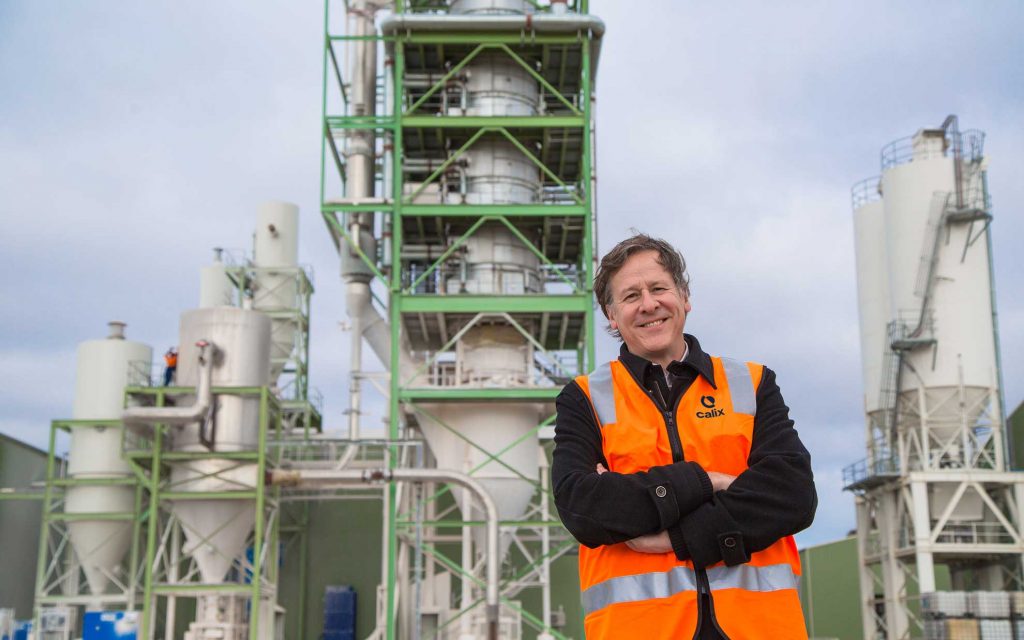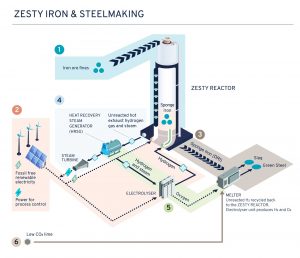Can Calix push steelmaking towards zero emissions?
Transformative technologies are being developed with support from ARENA to deliver zero emissions steel production.

As the world’s largest producer of iron ore, Australia is uniquely positioned to reduce emissions in steel production.
And that could make a big difference because steelmaking is responsible for more than seven per cent of global emissions.
If steelmaking could become an entirely electrified industry using renewable energy, those emissions could be cut to practically zero. But to get there, the steel industry must adopt transformative technologies that are only just being developed.
Reducing emissions from metals production is a strategic priority for ARENA, with a focus on the steel and aluminium value chains.
To that end, ARENA is providing $947,035 in funding to innovative Australian firm Calix to examine a potential low emission iron ore processing technology. The total cost of the combined pre-Front End Engineering and Design (FEED) study is $1.96 million.
It will evaluate the feasibility of using Calix’s proprietary Zero Emissions Steel Technology, aptly nicknamed ZESTY, to produce zero-emissions iron feedstock suitable for use in electric arc furnaces.

Calix’s proposed demonstration plant will be capable of producing 30,000 tonnes each year of the feedstock material known as Hydrogen Direct Reduced Iron (HDRI).
Established in 2005m Calix now has global presence on four continents. The company helps develop environmentally friendly solutions for many emissions intensive industries, including agriculture, cement manufacture, and mining and mineral processing.
Why is steelmaking so emissions intensive?
Most of the world’s steel is made using blast furnaces (BF), and blast furnaces use coal. A lot of coal.
It supplies fuel, chemistry and the physical environment for turning iron ore into iron metal.
The process starts with metallurgical coal, converted to coke at 1000 degrees C.
Burning the coke heats the furnaces where it also provides some of the chemistry necessary to convert iron ore to iron. The coke also forms a bed for those reactions to happen.
Those extra roles mean electricity cannot simply replace coal as a source of energy for a blast furnace. Coal and coke are integral to the process.
A second stage, called a basic oxygen furnace (BOF), then converts the iron into steel.
Together, the two stages are commonly referred to as BF-BOF .
This process emits around 1.8 tonnes of CO2 for every tonne of steel.
Are there alternatives?
The BF-BOF process has continually developed over the years, meaning modern furnaces operate close to efficiency limits. So, seeking modifications to significantly cut emissions is not a viable option.
Electric arc furnaces are a lower emissions alternative but have limitations.
Electric arc furnaces currently produce steel from two sources: recycled steel scrap and direct reduced iron (DRI).
DRI production converts iron ore in the form of solid pellets into iron. The process typically happens at high temperatures in a shaft furnace.
The problem with this from an emissions point of view is that DRI plants generally use natural gas to produce the reducing agents, carbon monoxide and hydrogen. It is both energy intensive, and the carbon monoxide eventually converts to CO2 .
Gas-based electric arc furnaces emit around 0.7 tonnes of CO2 per tonne of steel.
Can ZESTY provide the answer?
Hydrogen, on the other hand, reacts with iron ore to produce iron and water. Hydrogen produced by electrolysis using renewable energy is effectively zero emissions.
So, a direct reduced iron process, using only renewable hydrogen (HDRI), has the potential to eliminate natural gas. And, in combination with renewable energy powered electric arc furnaces, it could cut steelmaking emissions to zero.
To achieve that, ZESTY claims two advantages: it operates at temperatures approximately 1000 C below blast furnaces; it requires less hydrogen to convert the iron ore into iron.
How ARENA backs Australian innovation
ARENA CEO Darren Miller says ZESTY is a prime example of Australian innovation helping tackle global challenges.
“Decarbonising heavy industries like steel is both a big challenge and a big opportunity. ARENA is always looking to support companies like Calix that are developing potential solutions,” Mr Miller said.
“With abundant renewable energy resources and the world’s largest iron ore deposits, we have a unique opportunity to decarbonise an industry that is critical to the global economy.
“We’re looking forward to the outcomes of this study and hope to see ZESTY play an important role in the future of Australian iron and steel,” he said.
Calix Managing Director and CEO, Phil Hodgson said the project aims to further develop a homegrown Australian technology.
“The decarbonisation of iron and steel represents a unique opportunity for Australia. This project aims to further develop a homegrown Australian technology that we believe, together with Australia’s leading iron ore and renewable energy resources, can help make Australia a leading exporter of not just iron ore, but green iron and green steel.
The study is due to be completed in late 2023. It will inform Calix’s decision whether to proceed with the demonstration plant.
LIKE THIS STORY? SIGN UP TO OUR NEWSLETTER

ARENA